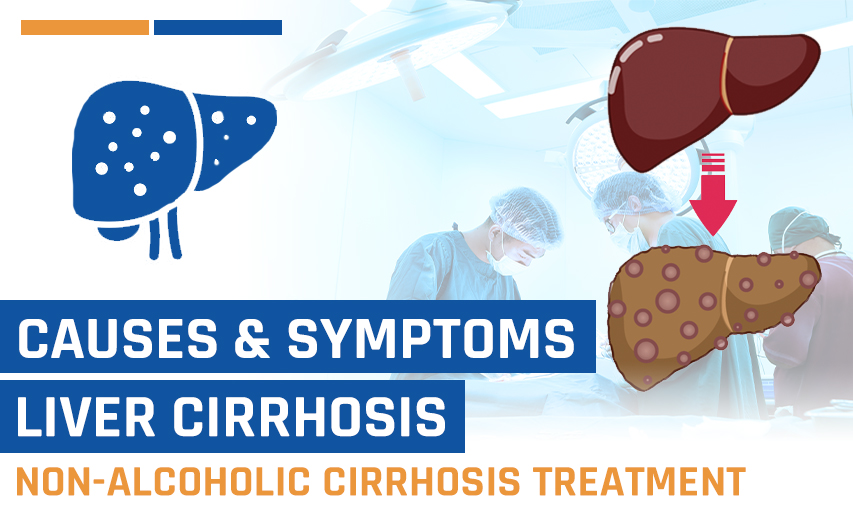Is Sickle Cell Anemia Inherited? Everything You Need to Know
Sickle cell anemia is a hereditary blood disorder that distorts red blood cells in terms of shape and function. Rather than being round and flexible, the cells turn rigid and crescent-shaped during the course of this disease, leading to an array of complications like pain, anemia, infections, and organ damage.
You might be wondering: Is sickle cell anemia inherited? The answer is yes—sickle cell anemia is inherited and passed from parents to their children through specific genes.
Patients from around the world, including African countries, often travel to India for sickle cell anemia treatment. India is regarded for its advanced medical infrastructure, highly experienced haematologists, and affordable treatment options.
Specialised treatment options, including bone marrow transplants, blood transfusions, and gene therapy, have enabled many patients to manage and actually cure their sickle cell disorders in India. In this blog, we’ll learn everything you need to know about the inheritance of sickle cell anemia and the treatment options available.
How is Sickle Cell Anemia Inherited & Its Inheritance Pattern?
Sickle cell anemia is a hereditary disorder since it is transmitted from a parent to offspring bearing the abnormal sickle cell gene. The inheritance pattern of this genetic disease is autosomal recessive, which requires both parents to transmit the sickle cell traits for their offspring to inherit sickle cell anemia. If a parent has sickle cell genes and the other parent does not, the child would probably inherit this carrier trait but not have the disease itself. Instead, the child becomes a carrier, which usually doesn’t cause symptoms.
However, if both parents carry the sickle cell gene mutation:
- There is a 25% chance that their child will inherit two sickle cell genes and develop sickle cell anemia.
- There is a 50% chance the child will inherit one sickle cell gene and become a carrier.
- There is a 25% chance the child will inherit normal haemoglobin genes from both parents.
Couples planning to have children should learn about this inheritance pattern, especially if the couple belongs to communities with a high prevalence of the sickle cell trait.
What are the Signs of Sickle Cell Anemia?
The signs of sickle cell anemia can vary from person to person and range in severity from mild to life-threatening. Here are some of the most common signs and complications associated with sickle cell anemia:
■ Chronic Anemia: Sickle-shaped red blood cells are more fragile and break down faster than normal cells, leading to a persistent shortage of healthy red blood cells—and, as a result, a chronic lack of oxygen throughout the body.
■ Severe Pain Crises: Known as sickle cell crises, these are episodes of intense pain caused by the blockage of blood flow in small blood vessels. Pain can occur in the chest, abdomen, joints, or bones and may last for hours or even days.
■ Frequent Infections: A damaged or poorly functioning spleen is a common complication in sickle cell patients, and it makes the body more vulnerable to infections.
■ Swelling in Hands and Feet: Pain and swelling may occur in the hands and feet due to blocked blood flow.
■ Delayed Growth and Puberty: Stunted growth due to decreased oxygen levels is also seen in children with sickle cell anemia.
■ Vision Problems: Tiny blood vessels in the eyes may become blocked, potentially leading to vision impairment or even blindness over time.
How is Diagnosis of Sickle Cell Anemia Done?
Doctors use several diagnostic tests to determine whether a person has sickle cell anemia. These include:
■ Neonatal Screening Test:
In many countries, a routine blood test is performed shortly after birth to detect sickle cell disease early. Early diagnosis leads to prompt treatment and, hence, better management of complications.
■ Hemoglobin Electrophoresis:
This specialised test identifies the different types of hemoglobin in the blood. It can confirm whether a person has sickle cell disease, carries the sickle cell trait, or has normal hemoglobin.
■ Genetic Testing:
Couples at risk of passing on the sickle cell gene—especially those with a family history—can undergo genetic testing to understand their chances of having a child with the condition.
■ Routine Blood Tests:
Standard blood tests can reveal low hemoglobin levels, the presence of abnormally shaped red blood cells, and signs of related complications, such as anemia or organ stress.
What are the Available Sickle Cell Anemia Treatment Options in India?
With its modern medical infrastructure and relatively inexpensive healthcare services, India has turned into a favored destination for the treatment of sickle cell anemia disorder. It provides various modalities of sickle cell anemia treatment, including:
1. Medications
■ Hydroxyurea: The hydroxyurea medication helps increase the production of foetal haemoglobin, which reduces the frequency of sickle cell crises and the need for blood transfusions.
■ Pain Relievers: Over-the-counter and prescription painkillers can be used to help manage painful episodes, also known as sickle cell crises.
■ Antibiotics: Particularly in young children, antibiotics such as penicillin are prescribed to help prevent serious infections.
2. Blood Transfusions
Regular blood transfusions are recommended for patients with severe anemia or those at risk of stroke. These transfusions increase the number of healthy red blood cells in circulation and help reduce complications.
3. Bone Marrow Transplant
A bone marrow or stem cell transplant is currently the only known potential cure for hereditary sickle cell anemia. In a bone marrow transplant procedure, a patient’s bone marrow is replaced with healthy stem cells from a compatible donor. While it carries certain risks, it also offers a promising long-term treatment in many successful cases.
4. Gene Therapy (Experimental Treatment)
Gene therapy is under active research and consideration by scientists with respect to the permanent cure of the inheritance of sickle cell anemia. The concept involves manipulating the genes of an affected subject to produce normal haemoglobin, with the possibility that the disease can someday be eliminated from humanity.
5. Lifestyle and Home Remedies
Patients with sickle cell anemia can also at times manage these symptoms through lifestyle modifications such as:
- Staying hydrated to prevent sickle cell crises.
- Avoiding extreme temperatures.
- Maintaining an everyday intake of iron and folic acid.
- Engaging in gentle exercise followed by cessation of heavy workouts.
- Getting immunised to avoid potential infections.
Why Get Sickle Cell Anemia Treatment in India?
India is now regarded as one of the best medical tourism destinations in the world for hereditary sickle cell anemia treatment. The following are some of the reasons why most of the patients from African countries travel to India for their sickle cell treatment:
■ Affordable Treatment Costs:
The treatment costs for sickle cell anemia treatment in India are substantially less than in the West, thereby making it reachable for expatriate patients.
■ Experienced Doctors:
India has a few of the highest-ranked hematologists and geneticists in the world who provide quality care with proven results.
■ State-of-the-Art Medical Science:
Indian hospitals utilise advanced medical facilities to diagnose and manage sickle cell anemia.
■ Minimal Wait Times:
Whereas in African countries, the US, and the UK, intervention procedures may take months to get scheduled, in India, hospitals allow for quick treatments with minimal waiting time.
■ All-Inclusive Treatment Packages:
CureIndia offers all-inclusive packages for medical procedures like sickle cell anemia that include accommodations and post-treatment care.




















Be First To Comment
Leave a Comment